1. Introna F, Campobasso CP. Biological legal age of living individuals. In : Schmitt A, Cunha E, Pinheiro J, editors. Forensic anthropology medicine: complementary sciences from recovery to cause of death. Totowa, NJ: Humana Press;2006. p. 57–82.
2. Demirjian A, Buschang PH, Tanguay R, Patterson DK. Interrelationships among measures of somatic, skeletal, dental, and sexual maturity. Am J Orthod. 1985; 88:433–438.

3. Cunha E, Baccino E, Martrille L, Ramsthaler F, Prieto J, Schuliar Y, et al. The problem of aging human remains and living individuals: a review. Forensic Sci Int. 2009; 193:1–13.

4. Choi JH, Kim CY. A study of correlation between the development of the third molar and second molar as an aid in age determination. J Korean Acad Oral Med. 1991; 16:121–136.
5. Almeida MS, Pontual Ados A, Beltrão RT, Beltrão RV, Pontual ML. The chronology of second molar development in Brazilians and its application to forensic age estimation. Imaging Sci Dent. 2013; 43:1–6.

6. Tunc ES, Koyuturk AE. Dental age assessment using Demirjian's method on northern Turkish children. Forensic Sci Int. 2008; 175:23–26.

7. Kırzıoğlu Z, Ceyhan D. Accuracy of different dental age estimation methods on Turkish children. Forensic Sci Int. 2012; 216:61–67.

8. Phillips VM, van Wyk Kotze TJ. Testing standard methods of dental age estimation by Moorrees, Fanning and Hunt and Demirjian, Goldstein and Tanner on three South African children samples. J Forensic Odontostomatol. 2009; 27:20–28.
9. Karataş OH, Öztürk F, Dedeoğlu N, Çolak C, Altun O. Dental age assessment: the applicability of Demirjian method in southwestern of eastern Anatolia region Turkish children. Cumhuriyet Dent J. 2012; 15:130–137.

10. Maber M, Liversidge HM, Hector MP. Accuracy of age estimation of radiographic methods using developing teeth. Forensic Sci Int. 2006; 159:Suppl 1. S68–S73.

11. Warren MW, Smith KR, Stubblefield PR, Martin SS, Walsh-Haney HA. Use of radiographic atlases in a mass fatality. J Forensic Sci. 2000; 45:467–470.

12. Logan WH, Kronfeld R. Development of the human jaws and surrounding structures from birth to the age of fifteen years. J Am Dent Assoc. 1933; 20:379–427.

13. Schour I, Massler M. The development of the human dentition. J Am Dent Assoc. 1941; 28:1153–1160.
14. Ubelaker DH. Human skeletal remains. Chicago: Aldine;1978.
15. Gustafson G, Koch G. Age estimation up to 16 years of age based on dental development. Odontol Revy. 1974; 25:297–306.
16. AlQahtani SJ, Hector MP, Liversidge HM. Brief communication: the London atlas of human tooth development and eruption. Am J Phys Anthropol. 2010; 142:481–490.

17. Blenkin M, Taylor J. Age estimation charts for a modern Australian population. Forensic Sci Int. 2012; 221:106–112.

18. Demirjian A, Goldstein H, Tanner JM. A new system of dental age assessment. Hum Biol. 1973; 45:211–227.
19. Moorrees CF, Fanning EA, Hunt EE Jr. Formation and resorption of three deciduous teeth in children. Am J Phys Anthropol. 1963; 21:205–213.

20. Bengston RG. A study of the time of eruption and root development of the permanent teeth between six and thirteen years. Dent Res Grad Study. 1935; 35:3–9.
21. Landis JR, Koch GG. The measurement of observer agreement for categorical data. Biometrics. 1977; 33:159–174.

22. Estrela C, Neto JV, Bueno MR, Guedes OA, Porto OC, Pécora JD. Linear measurements of human permanent dental development stages using cone-beam computed tomography: a preliminary study. Dental Press J Orthod. 2010; 15:44–78.
23. Makkad RS, Balani A, Chaturvedi SS, Tanwani T, Agrawal A, Hamdani S. Reliability of panoramic radiography in chronological age estimation. J Forensic Dent Sci. 2013; 5:129–133.

24. Alt KW, Rösing FW, Techler-Nicola M. Dental anthropology: fundamentals, limits, and prospects. Wien, New York: Springer Press;1998.
25. Nolla CM. The development of the permanent teeth. J Dent Child. 1960; 27:254–266.
26. Moorrees CF, Fanning EA, Hunt EE Jr. Age variation of formation stages for ten permanent teeth. J Dent Res. 1963; 42:1490–1502.

27. Haavikko K. The formation and the alveolar and clinical eruption of the permanent teeth. An orthopantomographic study. Suom Hammaslaak Toim. 1970; 66:103–170.
28. Karadayi B, Kaya A, Kolusayın MO, Karadayi S, Afsin H, Ozaslan A. Radiological age estimation: based on third molar mineralization and eruption in Turkish children and young adults. Int J Legal Med. 2012; 126:933–942.

29. Zeng DL, Wu ZL, Cui MY. Chronological age estimation of third molar mineralization of Han in southern China. Int J Legal Med. 2010; 124:119–123.

30. Dhanjal KS, Bhardwaj MK, Liversidge HM. Reproducibility of radiographic stage assessment of third molars. Forensic Sci Int. 2006; 159:Suppl 1. S74–S77.

31. Harris EF. Mineralization of the mandibular third molar: a study of American blacks and whites. Am J Phys Anthropol. 2007; 132:98–109.

32. Thorson J, Hägg U. The accuracy and precision of the third mandibular molar as an indicator of chronological age. Swed Dent J. 1991; 15:15–22.
33. Solari AC, Abramovitch K. The accuracy and precision of third molar development as an indicator of chronological age in Hispanics. J Forensic Sci. 2002; 47:531–535.

34. Butti AC, Clivio A, Ferraroni M, Spada E, Testa A, Salvato A. Häävikko's method to assess dental age in Italian children. Eur J Orthod. 2009; 31:150–155.
35. Ogodescu AE, Bratu E, Tudor A, Ogodescu A. Estimation of child's biological age based on tooth development. Rom J Leg Med. 2011; 19:115–124.

36. Bolaños MV, Moussa H, Manrique MC, Bolaños MJ. Radiographic evaluation of third molar development in Spanish children and young people. Forensic Sci Int. 2003; 133:212–219.

37. Willershausen B, Löffler N, Schulze R. Analysis of 1202 orthopantograms to evaluate the potential of forensic age determination based on third molar developmental stages. Eur J Med Res. 2001; 28:377–384.
38. Cantekin K, Yilmaz Y, Demirci T, Celikoglu M. Morphologic analysis of third-molar mineralization for eastern Turkish children and youth. J Forensic Sci. 2012; 57:531–534.

39. Sisman Y, Uysal T, Yagmur F, Ramoglu SI. Third-molar development in relation to chronologic age in Turkish children and young adults. Angle Orthod. 2007; 77:1040–1045.

40. Mincer HH, Harris EF, Berryman HE. The A.B.F.O. study of third molar development and its use as an estimator of chronological age. J Forensic Sci. 1993; 38:379–390.

41. Kullman L. Accuracy of two dental and one skeletal age estimation method in Swedish adolescents. Forensic Sci Int. 1995; 75:225–236.

42. Schmeling A, Olze A, Pynn BR, Kraul V, Schulz R, Heinecke A, et al. Dental age estimation based on third molar eruption in First Nation people of Canada. J Forensic Odontostomatol. 2010; 28:32–38.
43. Olze A, Peschke C, Schulz R, Schmeling A. Studies of the chronological course of wisdom tooth eruption in a German population. J Forensic Leg Med. 2008; 15:426–429.

44. Hillson S. Teeth. 2nd ed. Cambridge: Cambridge University Press;2005.
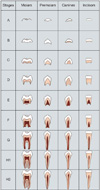
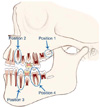
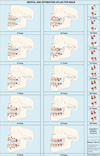
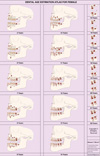








 PDF
PDF ePub
ePub Citation
Citation Print
Print


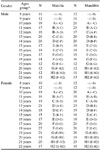
 XML Download
XML Download